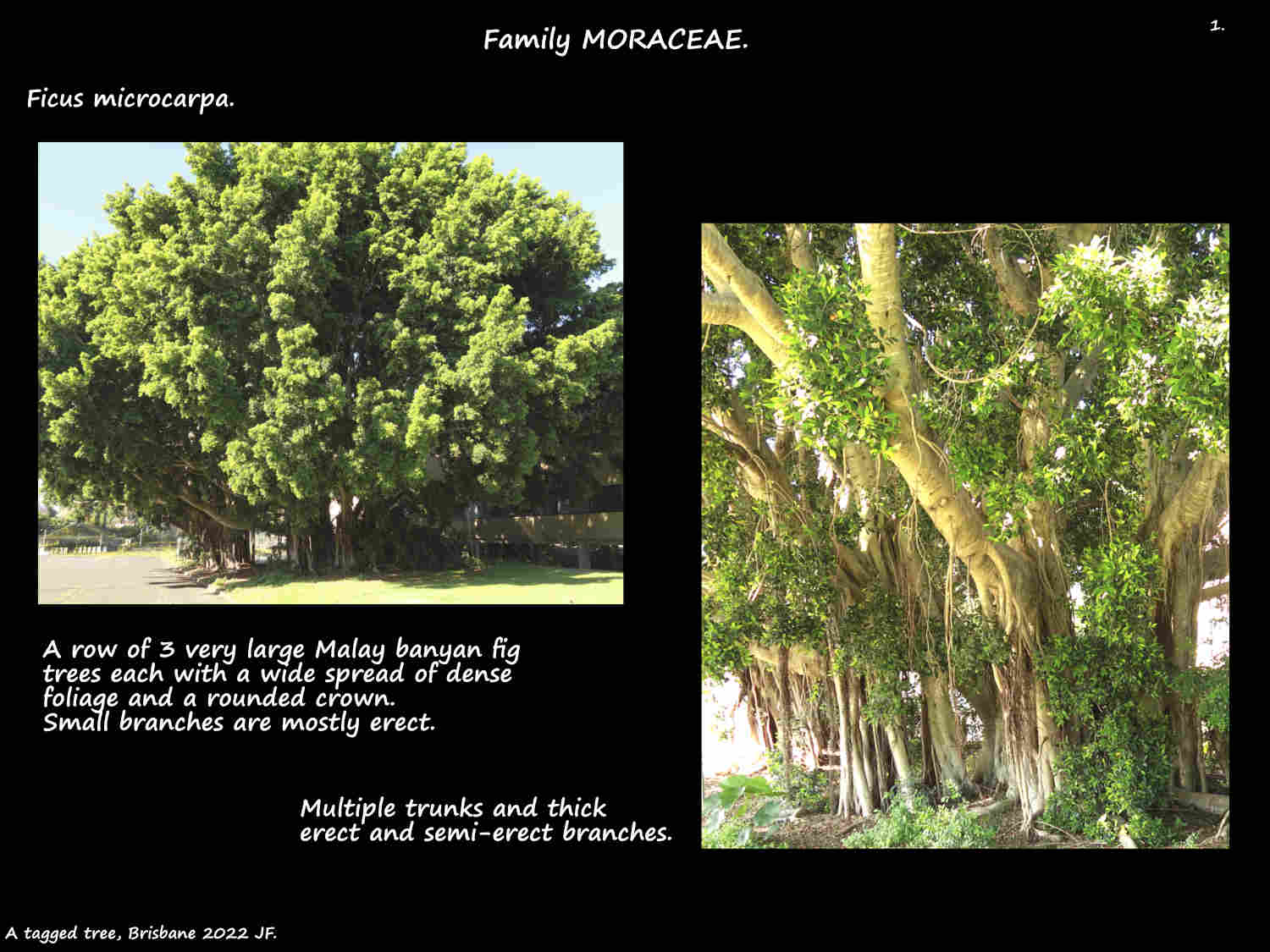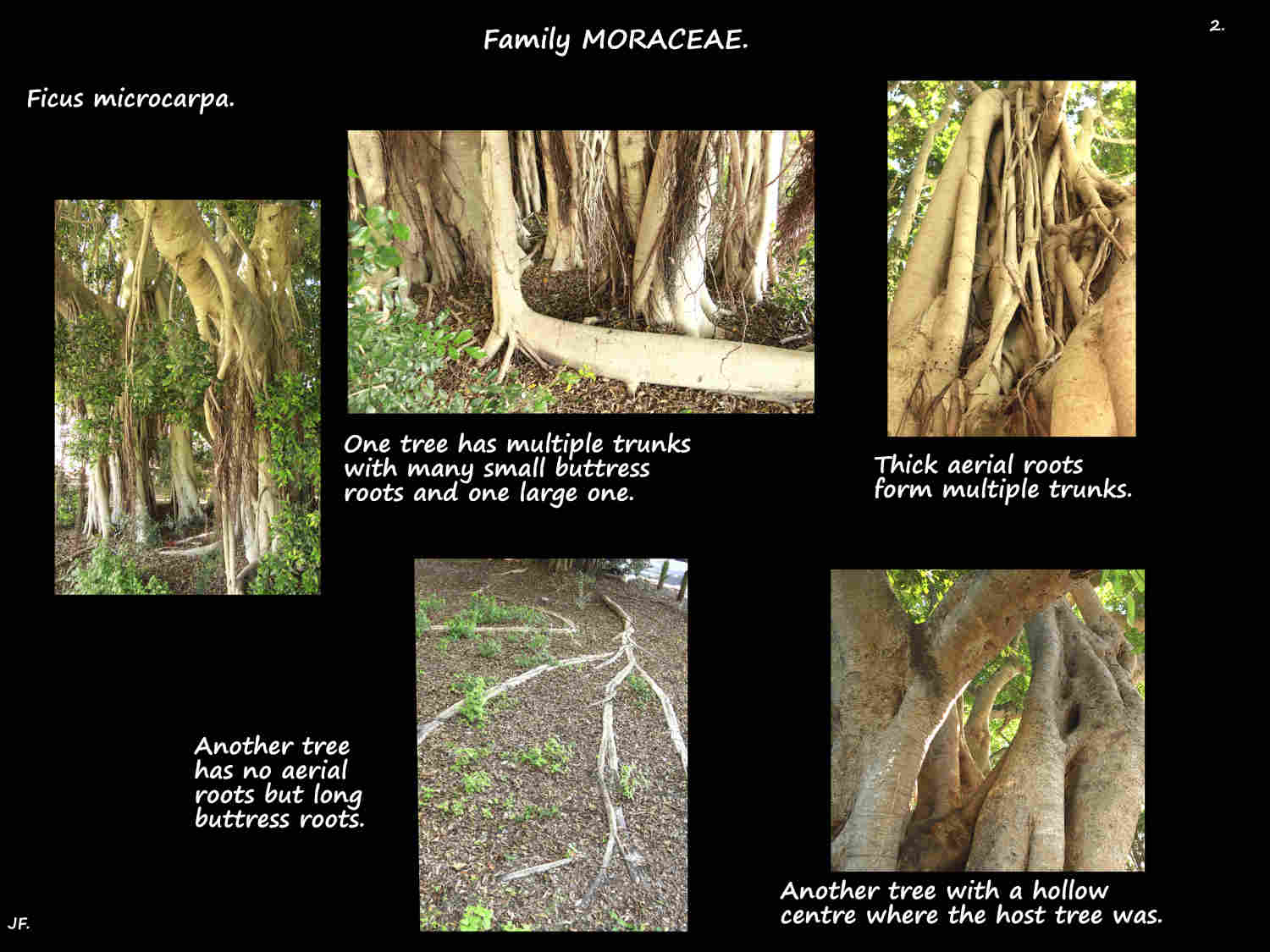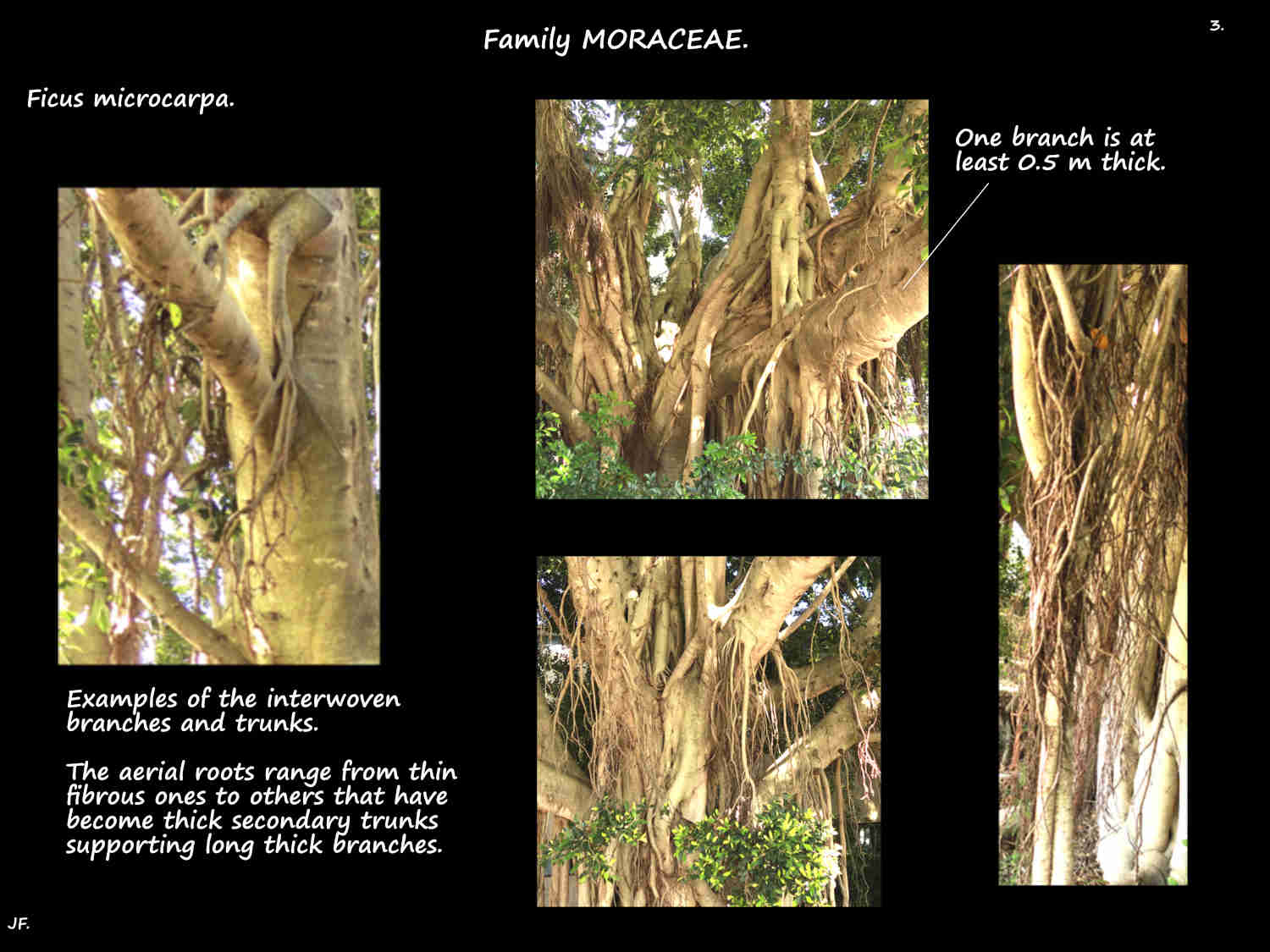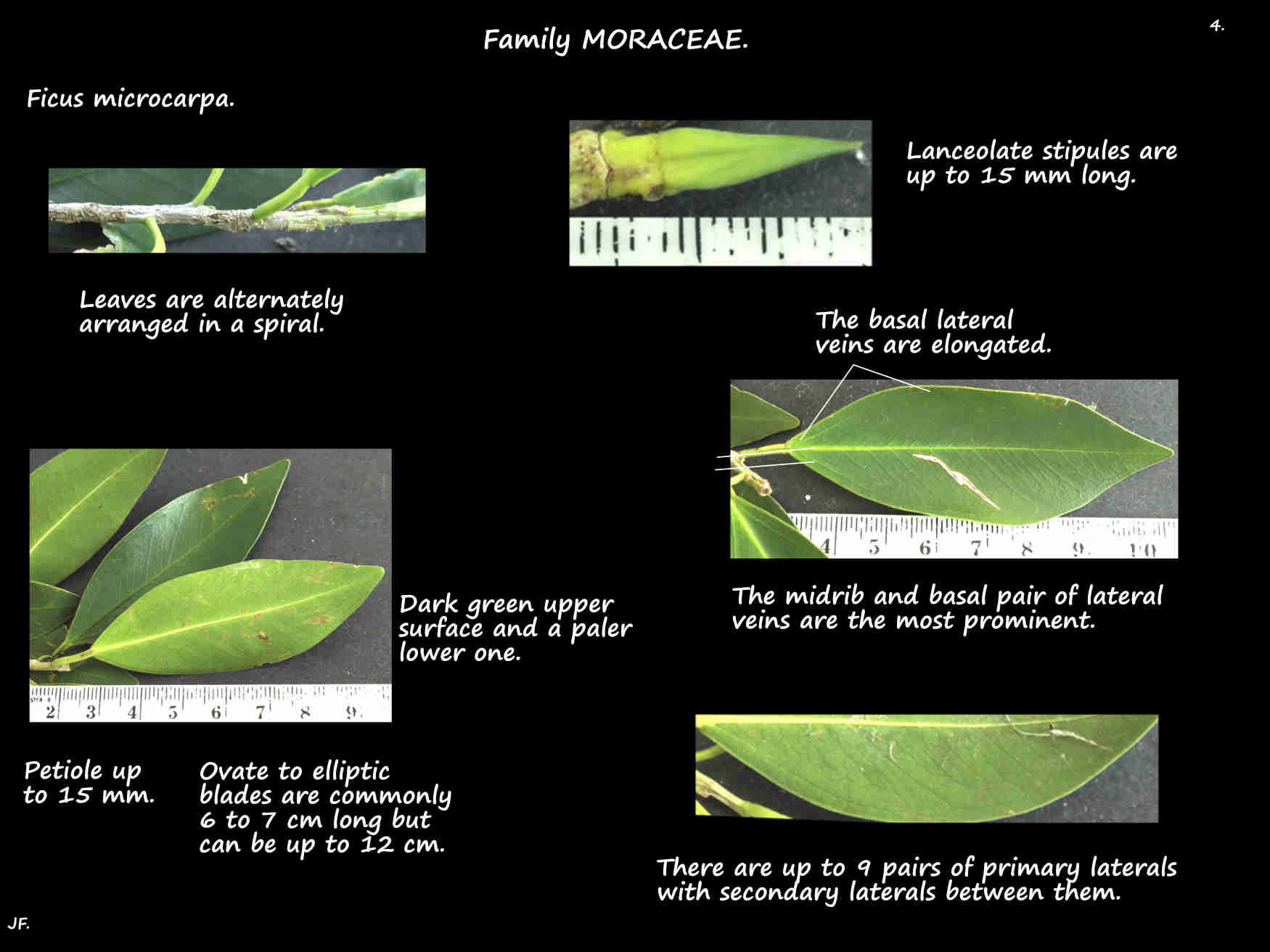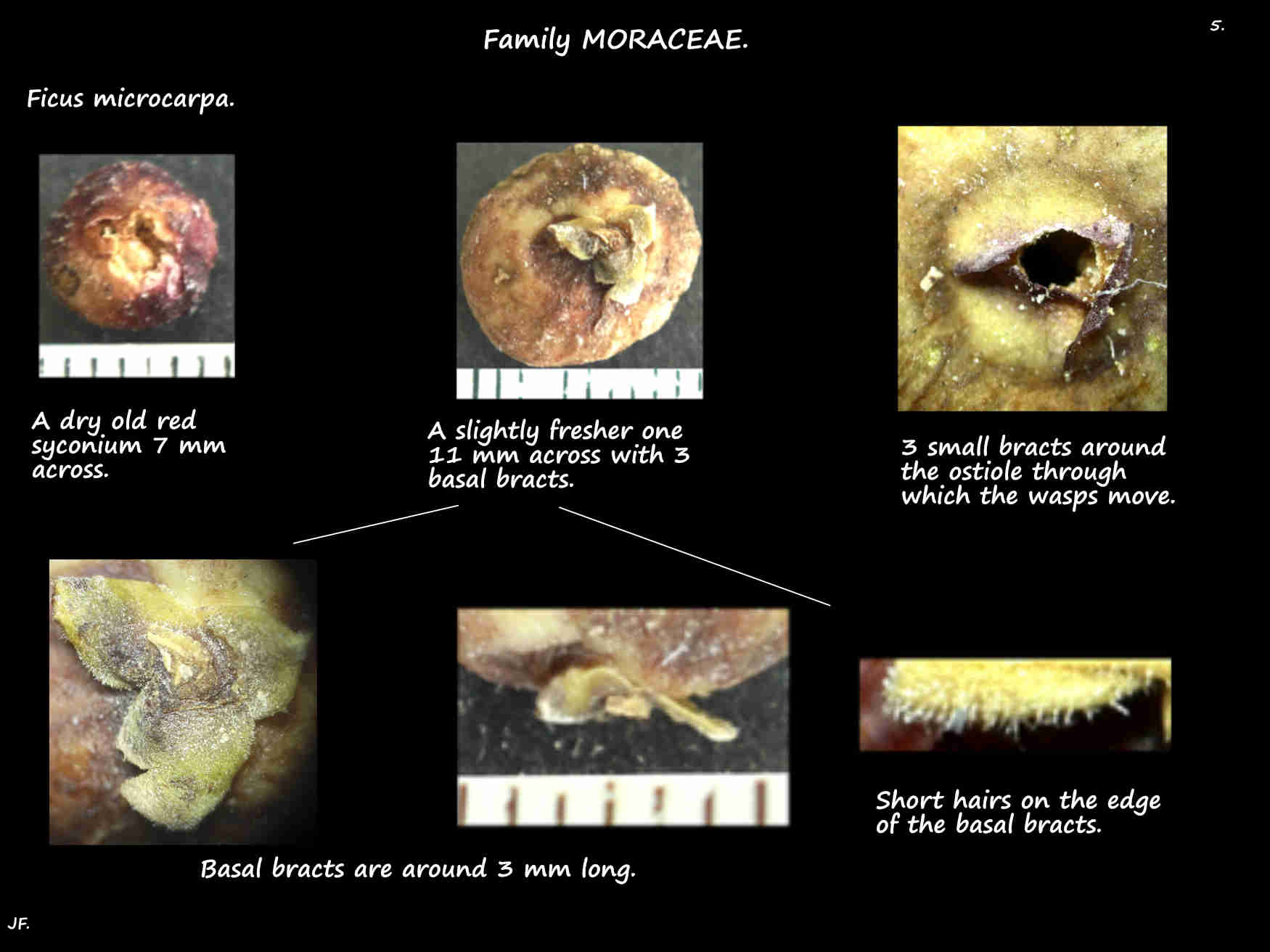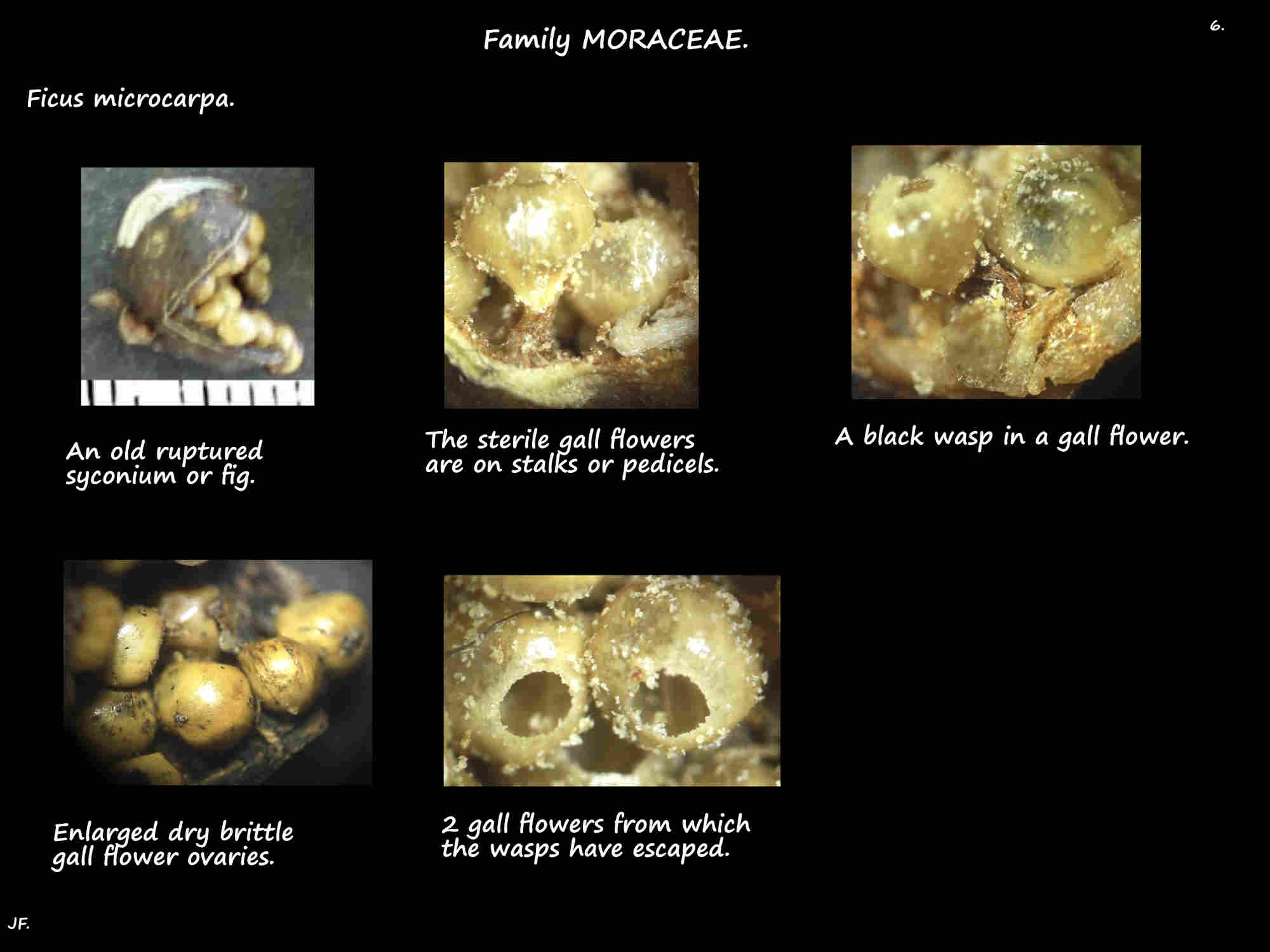Ficus microcarpa.
Native to Queensland and S.E. Asia it is commonly known as the Chinese or Malay banya and the
Curtain or the Small-fruit fig.
They are commonly seen in Brisbane mainly in parks and large spaces.
Seeds dropped almost anywhere can germinate even in cracks in bricks or concrete.
Starting on the ground it is a small shrub that develops into a large tree.
Seeds germinating on another tree produce long aerial roots that obtain nourishment from, then eventually
strangle and kill the host tree.
Fully grown trees, up to 25 m high have a rounded crown and dense foliage.
Large trees may have buttress roots and there are many long widely spreading branches.
The trunk has fairly smooth pale grey or brown bark.
Trees that started as an epiphyte show evidence of the multiple aerial roots.
All parts contain a milky latex.
Large trees sometimes develop thin dangling aerial roots that can be extensive like curtains hanging from the branches.
If they reach the ground they may gradually develop into thick secondary trunks.
The thin twigs holding the leaves are flat or angled in cross section.
The ovate to lanceolate stipules protecting the leaf buds are up to 1.5 cm long with a few hairs on the edges.
The stipules soon fall leaving a scar around the twig.
The simple evergreen leaves, on petioles up to 1.5 cm long are alternately arranged in a spiral.
The elliptic to ovate or obovate blades, up to 10 or 12 cm long and 1.5 to 5 to 7 cm wide are variable.
The tip tapers to a blunt or slightly pointed tip.
The sides just below the tip are concave rather than straight (acuminate).
The base is wedge-shaped and sometimes asymmetric.
The mature dark green leathery leaves have a smooth edge and no hairs.
Veins are pinnate with the midrib and the basal pair being the most prominent.
There are also up to 9 pairs of primary lateral veins and secondary laterals.
These are all closely spaced and the basal pair are elongated.
Inflorescences are called a syconium in which many small flowers line the inner surface of an enlarged and
inverted receptacle (end of the stem).
In pairs in the leaf axils or on old leafless branches they are directly attached.
Each is pear-shaped or a slightly flattened sphere 6 to 10 mm across without hairs.
Almost hidden between the base and the branch are 3 persistent basal bracts.
These wide bracts, with a blunt tip are up to 3 mm long.
At the tip of the syconium is a small opening or ostiole through which the female pollinating wasps can enter and leave.
Around this are three flat, 2 mm wide scales or bracts that may be flat or only slightly raised above the surface.
Flowers are unisexual with male and female in each syconium as well as sterile female gall flowers.
All flowers have 3 tepals and there are a few tiny hairs or bristles scattered between their bases.
Male flowers, with a very short or no stalk have 1 stamen on a 0.3 mm long filament.
Female flowers, on no stalk have an ovary with a cylindrical or club-shaped stigma.
There is a one ovule in the single locule of the ovary.
The sterile gall flowers, on a stalk or pedicel have an ovary with a wide or funnel-shaped stigma.
The female fig-wasps lay their eggs in the ovaries of the gall flowers as they cannot reach the fertile female ovaries.
In leaving the syconium newly hatched females collect pollen and fly to another syconium.
The fruit or mature figs, under 1 cm wide ripen from green to pale yellow then red then a deep purplish-black.
At maturity each female ovary develops into an achene with a tiny seed that can develop into another massive tree.
A number of varieties have been described but the small differences are probably just due to populations occurring
across such a large area.
Features used to differentiate them include the leaf being wide or narrow, the veins prominent or not on the lower
surface, the basal lateral pair being elongated or not and the presence or absence of bristles among the flowers.
F. microcarpa var. hillii is probably the most commonly seen. Its leaves are slightly shorter and narrower, the veins are
not prominent on the lower surface, the basal lateral pair are only slightly elongated and there are
usually no bristles between the flowers in the syconia.
J.F.
